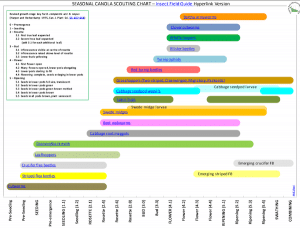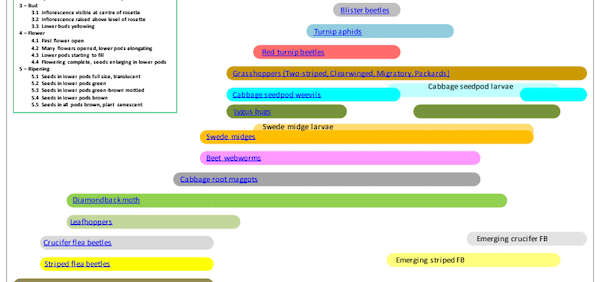Prairie Pest Monitoring Network prepared a canola scouting chart for insects. Insects to watch for before and during seeding and immediately after emergence are cutworms, flea beetles, leafhoppers and diamondback moth. Subscribe to the blog.


Prairie Pest Monitoring Network prepared a canola scouting chart for insects. Insects to watch for before and during seeding and immediately after emergence are cutworms, flea beetles, leafhoppers and diamondback moth. Subscribe to the blog.
